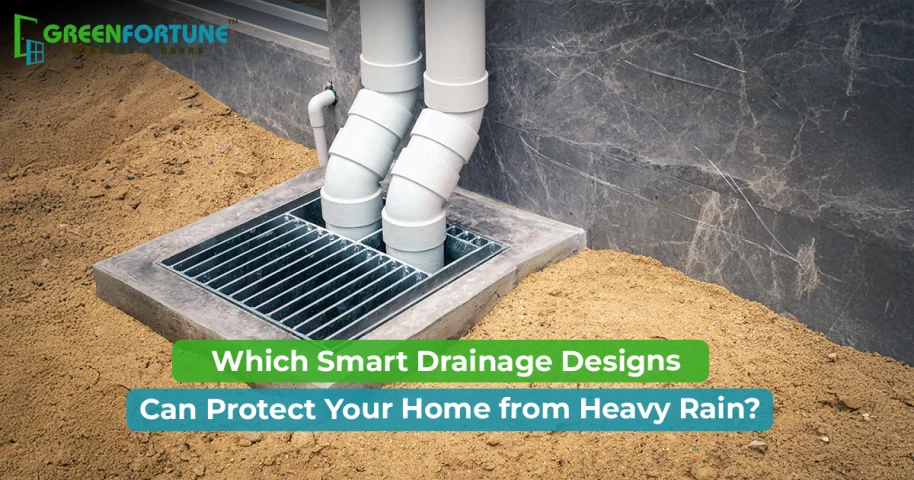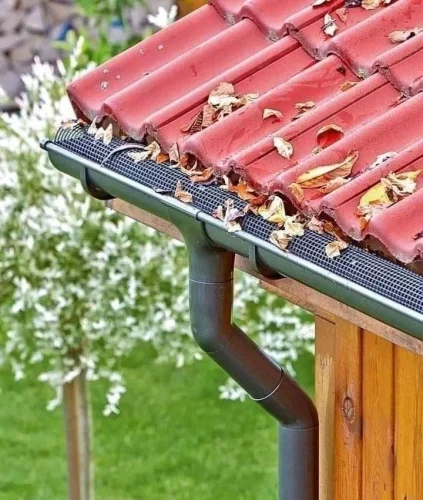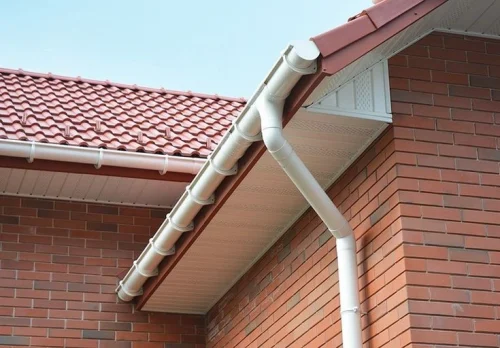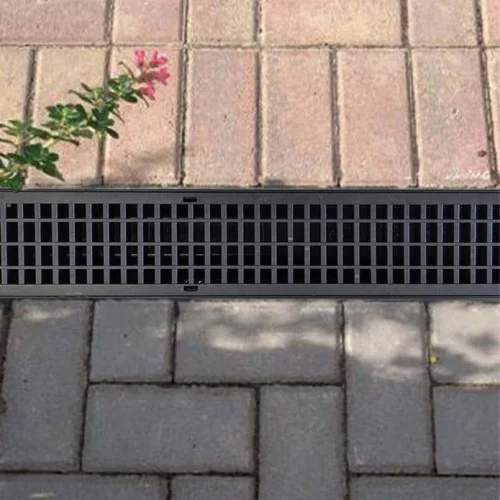
Top 10 Modern Duplex House Design Trends in India
July 8, 2025
Modern Corner Window Design Ideas to Maximize Natural Light
July 8, 2025Have you ever had a water pool around your house after a heavy rain? Or seen muddy patches ruining your backyard? Or worse, noticed water seeping into your walls or basement?
If yes, then it’s time to think seriously about your rainwater drainage system for home.
In most cases, we only react when there’s visible damage. But the truth is, proper drainage is one of the most underrated parts of home safety. A well-planned system not only protects your foundation, walls, and floors—it also makes your home more livable and sustainable.
Let’s break it all down in the simplest way possible.
Why You Need a Good Rainwater Drainage System for Your Home
When it rains, your roof collects a huge amount of water. That water needs to go somewhere. If your house doesn’t have a good system to drain it away, it can:
- Damage your walls and roof
- Cause mold or damp spots inside
- Lead to foundation cracks over time
- Create slippery surfaces that can cause accidents
A good rainwater drainage system for home helps avoid all of these problems. It directs water away from your building quickly and safely.
And the best part? You can design a system that also supports rainwater harvesting, which saves water for later use.
Before building anything, let’s understand how water moves around your home.
- Rooftop – Your roof is the first surface that catches rainwater.
- Gutters – These run along the edges of your roof to collect and guide the water.
- Downspouts – Pipes that carry the water from the roof to the ground.
- Drains or Storage – These carry water away from your home or store it if you’re using a rainwater harvesting system for your home.
The goal is simple: move rainwater away from your home’s structure as quickly as possible.
Step-by-Step Guide to Building a Rainwater Drainage System for Home
Step 1: Inspect Your Home’s Layout
Take a walk around your house on a rainy day. Notice where water collects. Are there puddles near the walls? Are the gutters overflowing?
Make a simple sketch of your home and mark the flow of water. This will help you understand where to add or improve water drainage solutions for home.
Step 2: Install or Upgrade Your Roof Gutters
Gutters are your first line of defense.
Choose gutters that:
- Match the size of your roof
- Have a slope so water flows easily
- Don’t clog up with leaves (install mesh if needed)
If your gutters are old, cracked, or small, they won’t help much. Clean them regularly and fix any leaks.
Tip: Don’t forget gutter guards! They stop debris from blocking the system.
Step 3: Add the Right Downspouts
Downspouts connect the roof gutters to the ground. Each downspout should be placed at the right corner of your house, where the slope of the gutter naturally leads water.
A proper downspout:
- It is straight and vertical
- Ends at least 3–5 feet away from your foundation
- Has a splash block or drainpipe to move water farther
Want to go eco-friendly? You can connect downspouts to a rainwater harvesting system for home, like a barrel or underground tank.
Step 4: Plan Your Rooftop Rainwater Drainage Design
A flat roof needs different drainage compared to a sloped one.
If you have a sloped roof:
- Water flows naturally to the gutters—an easy job.
If you have a flat roof:
- You’ll need rooftop drains at multiple points
- Use drain covers to avoid blockages
- Ensure your roof has a slight slope so water doesn’t pool
For large rooftops, use multiple drainage points so no area is left soaking.
Step 5: Create Ground Drainage Channels
Once the water leaves your roof, it needs a proper path to exit.
You can do this with:
- Drainage trenches (simple dug-out paths filled with gravel)
- French drains (pipes buried underground that carry water away)
- Dry wells (underground pits where water slowly soaks into the soil)
These water drainage solutions for home keep your yard from turning into a swamp.
Bonus: These systems are low-maintenance and work quietly in the background.
Step 6: Connect to a Rainwater Harvesting System (Optional but Smart)
Want to save water for gardening or cleaning? You can easily combine your drainage system with a rainwater harvesting system for home.
Here's how:
- Connect your downspouts to a storage tank
- Use a basic filter to remove leaves and dirt
- Add a tap at the bottom of the tank for easy access
This way, instead of wasting water, you reuse it.
Things to Keep in Mind
- Always slope your drainage pipes away from the house
- Clean your gutters before and after every rainy season
- Check for cracks or leaks in your drains every 6 months
- Don’t let rainwater pool near windows, doors, or steps
Even the best rainwater drainage system for home can fail if it’s not maintained regularly.
Common Problems & Quick Fixes
Problem | Likely Cause | Fix |
Water is pooling on the roof | Poor slope or blocked rooftop drain | Reslope the roof or unclog the drain |
Gutter overflow | Leaves or small gutters | Install guards or upgrade the gutter size |
Basement water seepage | No foundation drainage | Add a trench or French drain |
Puddles in the yard | No surface drainage | Install gravel channels or dry wells |
Mosquitoes near water tanks | Open tanks | Add a lid or a net to the rainwater tank |
Design Tips for Better Drainage
- Use gravity, not pumps. A natural slope always works best.
- Keep pipes wide. Wider pipes mean less clogging.
- Hide your system well. You don’t need ugly pipes across your walls.
- Match your home style. Use materials that blend in, like terracotta, stone, or painted PVC.
Remember, your rooftop rainwater drainage design doesn’t have to look industrial. It can be both functional and beautiful.
Final Thoughts
You don’t need to wait for your basement to flood or your plants to die before taking action. A little planning today can save you a ton of trouble (and money) tomorrow.
Building a rainwater drainage system for home isn’t just about pipes and tanks. It’s about protecting your space, conserving water, and extending the life of your home.
So take that first step. Walk around your home. See where the water goes. And start shaping a system that works with nature, not against it.
You’ll be surprised how small changes make a big difference.
Looking To Fully Weatherproof Your Home?
Along with a solid rainwater drainage system, GreenFortune.com offers durable, leak-proof uPVC windows and doors that keep rain and moisture exactly where they belong—outside.
Our high-quality fittings are built to withstand heavy monsoons while improving insulation and energy efficiency. Check out GreenFortune’s collection today and upgrade your home’s safety from top to bottom.
FAQs
- What is the most important part of a rainwater drainage system for home?
The most important part is getting the slope and layout right so that water flows away from your home's foundation. Gutters, downspouts, and ground channels must work together to guide water safely. If any one part is poorly designed or blocked, the entire system can fail.
- Can I build a rainwater harvesting system for home along with the drainage system?
Yes, both systems can work together perfectly. You can direct water from your rooftop into storage tanks while still draining excess water away from the house. This setup lets you reuse rainwater for gardening or cleaning while keeping your home safe.
- How much does it cost to install a rooftop rainwater drainage design?
Costs vary depending on your roof size, slope, materials, and whether you're adding storage. A basic setup with gutters and downspouts might cost a few thousand rupees, while a full system with rainwater harvesting could go higher. The good news is it’s a one-time investment that protects your home for years.







